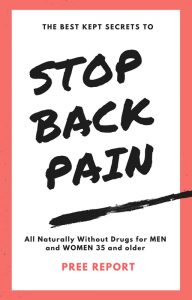Managing Shoulder Pain on Your Own
You might notice pain in your shoulder but be unsure why it even started. What becomes even more frustrating is no matter what you do the pain can be debilitating and limit your life significantly. You are not alone because approximately 50% of the general population will experience shoulder pain this year. The most common age is 37-70 years and females are slightly more likely to experience this debilitating problem. You may not know how to help yourself overcome this limitation, but by doing a few simple things you can begin to live without pain from your shoulder.
 The most common causes of shoulder pain are tendon inflammation (bursitis or tendinitis), tendon tear, instability, arthritis and fracture.
The most common causes of shoulder pain are tendon inflammation (bursitis or tendinitis), tendon tear, instability, arthritis and fracture.
A common myth about shoulder pain is it comes from a direct injury.
However, approximately 70% of people will not be able to identify a direct cause of their pain but instead will report that is just started to hurt.
Another common myth is that shoulder pain means I need surgery.
Often times the pain can just be caused by poor posture, tightness and weak muscles. A quick way to self test your shoulder is to compare your flexibility between shoulders. First try reaching behind your back with each arm. Stop when you experience either pain or tightness and compare the two arms. Next try reaching behind your head like you’re trying to scratch between your shoulders. Again stop when you experience pain or tightness and compare the two arms. If you have any noticeable differences between the two sides some simple stretching can help tremendously. Being more aware of your posture can be very helpful. Focus on keep your shoulders back and keep from slouching. Doing some shoulder blade squeezes where you focus on trying to bring your shoulder blades closer together can do some basic strengthening.
A complete evaluation from a licensed physical therapist can be of great help to determine the exact cause of the pain, more specific areas of tightness, assess strength and develop a specific course of action unique to your situation. Depending on the severity of your condition the cost can vary to a degree, and payment plans are available if necessary. Be careful of pain as this in your body’s way of indicating potential damage being done. So if it hurts stop and let your physical therapist know.
The pain from your shoulder can be intense and limiting but working on your own to address flexibility, posture and strengthening can be very beneficial. Also, don’t be afraid to seek help if necessary from a licensed physical therapist, the cost might not be as bad as you think, and your insurance may cover most of all of it. If you don’t have insurance there are some significant discounts available to you.
The worst thing you could do is wait and hope your shoulder pain goes away. Things will get tighter, you will get weaker and you could cause further damage which will just wind up costing you more money, pain and time.
Jesse Elliott, Doctor of Physical Therapy
Owner of Siskiyou Physical Therapy in Grants Pass Oregon
SiskiyouPT.com
(541) 479-6936



